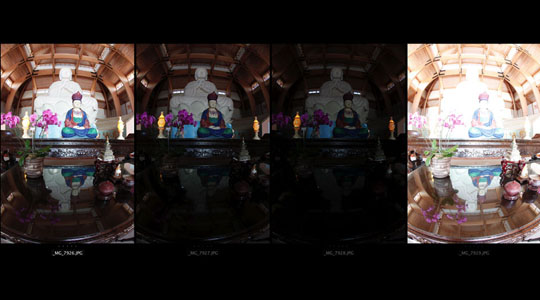| Photography by Trey Ratcliff |
It's Round 2 of the week-long Battle of the HDR Photo Tips: Trey Ratcliff vs. Rick Sammon. Thank you for joining us ringside.
Trey Ratcliff is some dude on the internet that runs Stuck in Customs. His mom visits his blog every day. If people leave bad comments, then his mom gets 'em.
Here we go:
Ratcliff: I think all photographers like reflections, but HDR photographers doubly-like reflections!
If you’ve been taking photos for a long time, this new way of thinking about reflections may take some getting used to. If you are just doing a “regular’ photo, the reflections can sometimes come out flatly lit, over-exposed, or long-exposure-blurry. HDR can get around all that by combining the best bits of the various constituent images.
So, to that end, I try to set up the composition to ensure the interesting bits within the microcontrast are more than evident in the reflection. That is, there are bits of your photo that lend themselves to HDR more than others. Try your best to keep those bits front and center, and let all the other traditional compositional techniques (leading lines, etc) lead to those points of micro-contrast-tonal-mapping interest.
This is the amazing National Centre for the Performing Arts, or as I like to say, the 国家大剧院 — I find that rolls of the tongue a bit easier.
| Photograph by Rick Sammon |
Sammon: My first tip: Look for, and have fun with, reflections. For whatever reason, we love' em.
Think selectively, rather than globally - especially when it comes to sharpening. In most cases, it's not necessary to sharpen the entire image. If you sharpen soft and dark areas of a picture, you'll increase the amount of noise in those areas. Also, sharpening the main subject draws more attention to the main subject.
Think selectively, rather than globally - especially when it comes to sharpening. In most cases, it's not necessary to sharpen the entire image. If you sharpen soft and dark areas of a picture, you'll increase the amount of noise in those areas. Also, sharpening the main subject draws more attention to the main subject.
Thinking and working selectively is also important when it comes to saturation and contrast – as well as Levels and Curves. If you over-saturate an already saturated area of an image, for example, you may lose detail in that area. Same is true if you increase the contrast globally.
For the above reasons, I always bring my HDR images into Photoshop or Lightroom.
I took this image with my Canon 5D Mark II and Canon 15mm lens in the Great Buddha Hall at the Chaung-yen Monastery in Kent, NY - one of the places we shoot on my Croton Creative Workshop.
Above is a screen grab of the four images I used to create the HDR image.
Here's an important tip for shooting in Buddhist temples: Wear slip-on shoes, as you need to take them off before you enter the temple.
Above is a screen grab of the four images I used to create the HDR image.
Here's an important tip for shooting in Buddhist temples: Wear slip-on shoes, as you need to take them off before you enter the temple.
• • •
To learn more about Trey's HDR work, click here.
To learn more about my latest HDR project, Rick Sammon's HDR Portfolio app for the iPad, click here.
Explore the light,
Rick

